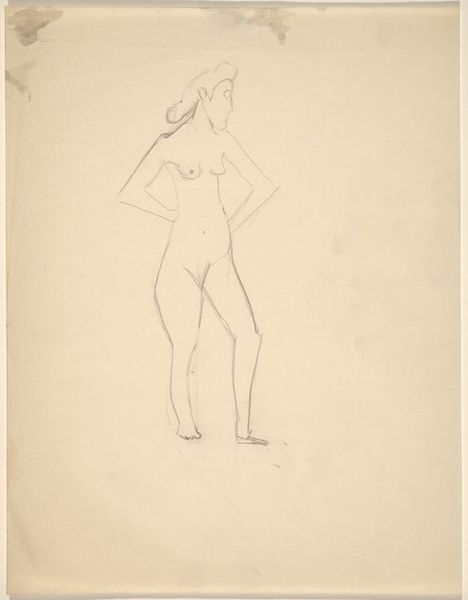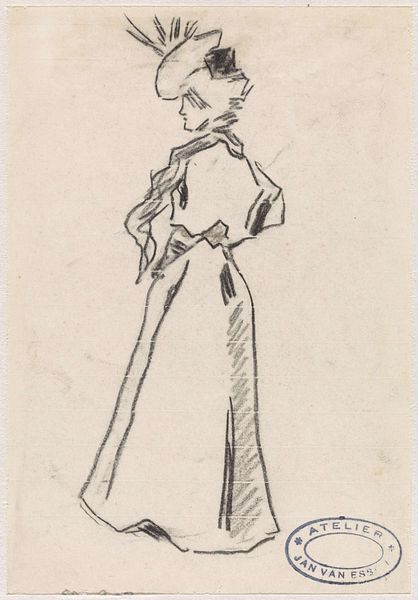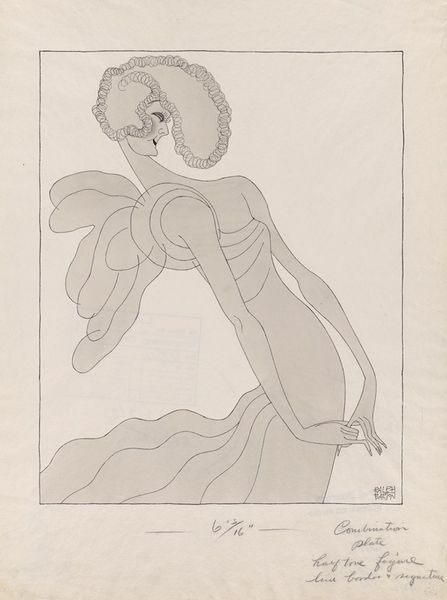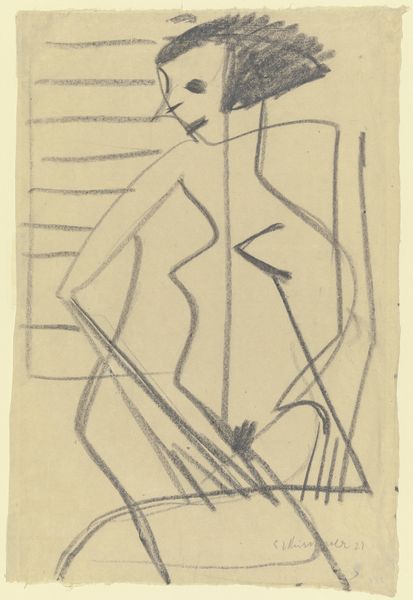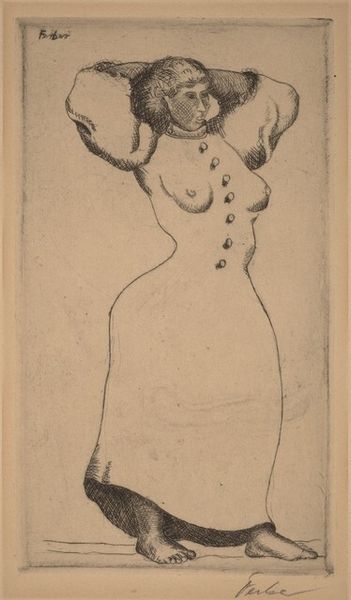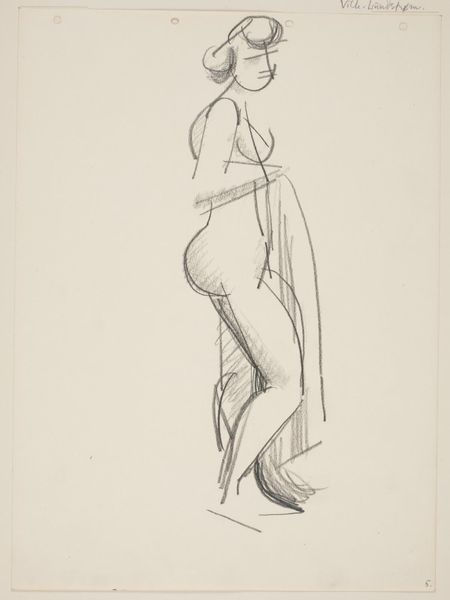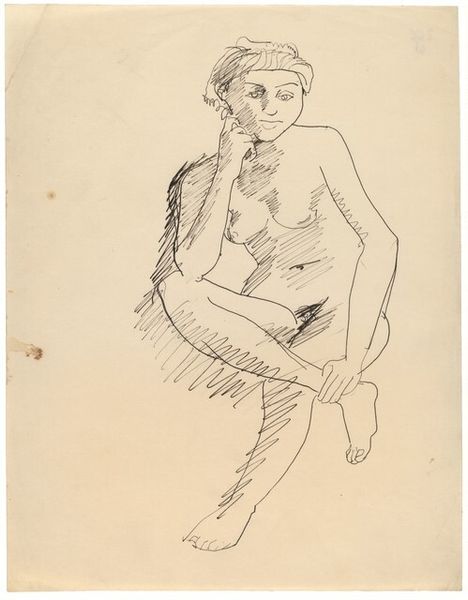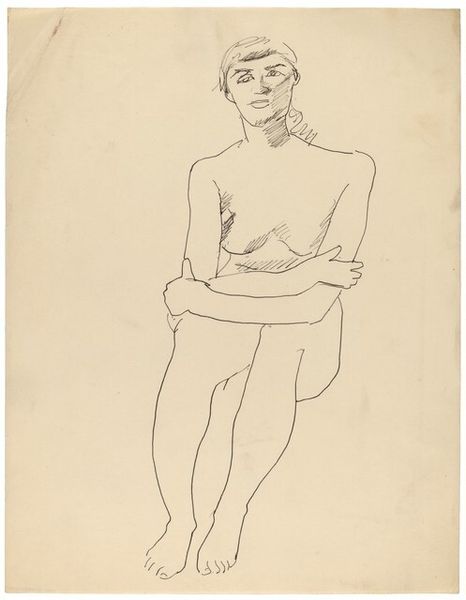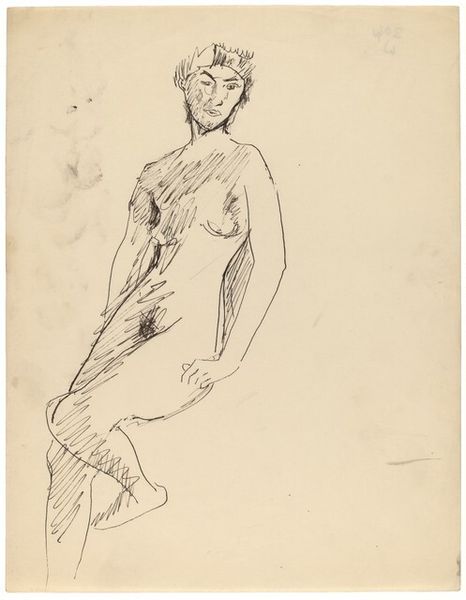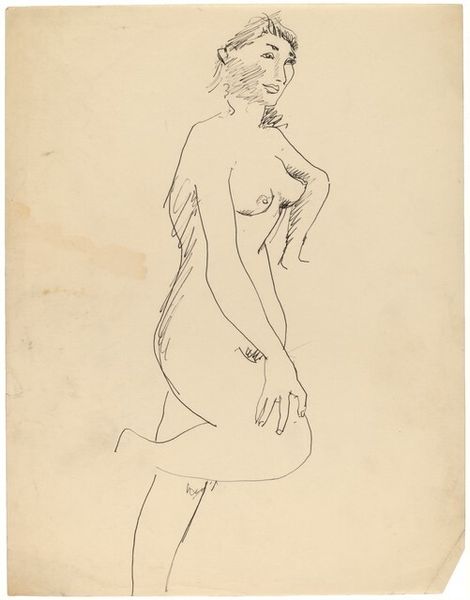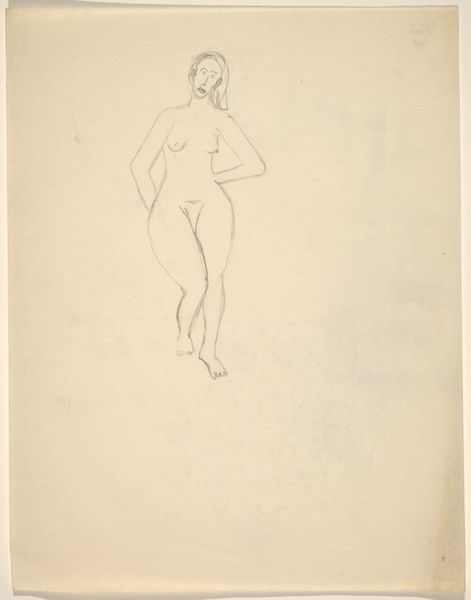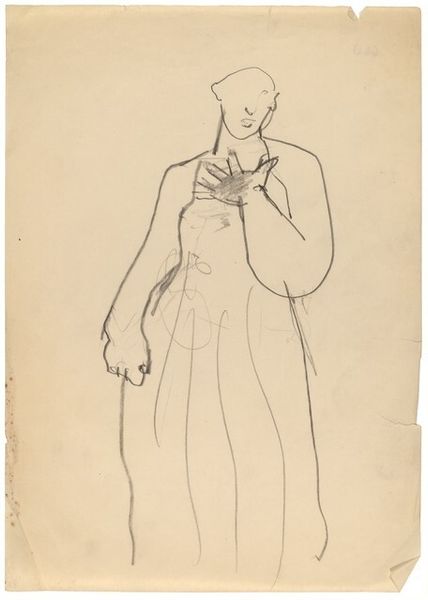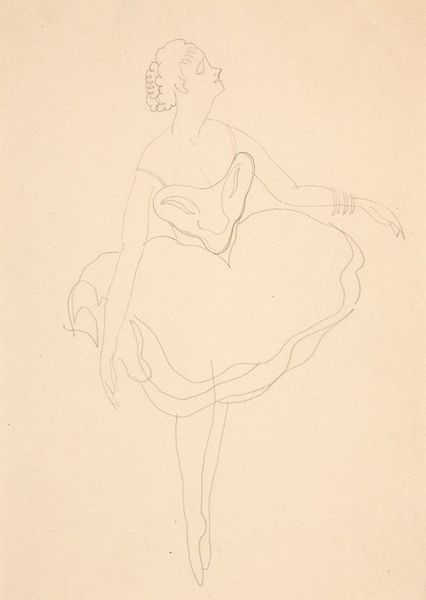
print, etching
#
cubism
# print
#
etching
Copyright: National Gallery of Art: CC0 1.0
Curator: This etching from 1922 is called "Automobilist," and it comes to us from the inimitable Marc Chagall. It is an important print demonstrating his movement into cubism. What is your first reaction? Editor: A sense of the absurd, almost whimsical. There's this figure with… is that a car perched on its head? It’s both comical and unsettling; the etching seems to capture the machine age but also almost satirize it. Curator: Absolutely, I see the satire. Looking at it through a historical lens, we see how the rise of the automobile greatly shaped modern life. This "Automobilist" may be commenting on the obsession of society at that time with technology and speed, and perhaps at its expense of losing human qualities. The First World War also radically changed European society, resulting in a desire to return to 'normalcy'. However, this work hints at the changing definition of 'normal'. Editor: I’m especially drawn to the figure's mask-like face and elongated body. There’s a disconnect there, a kind of fragmentation – echoed, as you mention, in the cubist elements. The car on the head functions symbolically – is it an obsession, an overwhelming force, or a sign of supposed social mobility? The car certainly dominates the composition, acting as a symbol, almost an aura. Curator: Indeed. We see this symbol repeated throughout culture, for example in early Modernist photography which valorized industry. Here, it feels very different; this symbolism acts more as a cage, trapping the figure into submission of modernism. Editor: What I find compelling is the use of line, almost frantic in places, and the negative space, which imbues the figure with isolation. It almost hints at premonitions of the dystopia that art of the coming World War would portray. What remains potent, however, is that it's both dark, funny, strange and prescient. Curator: Looking at Chagall’s early biography, one wonders if the piece refers to both his own struggle of the loss of native Russia but the possibilities he then began to feel after migrating to Paris, such as social mobility. The image, like the man, becomes an agent of migration in and of itself. A true commentary for our modern world today! Editor: It's as if this work has something new to say each time you view it, offering an insight into history, psychology and symbolism to all its beholders.
Comments
No comments
Be the first to comment and join the conversation on the ultimate creative platform.
